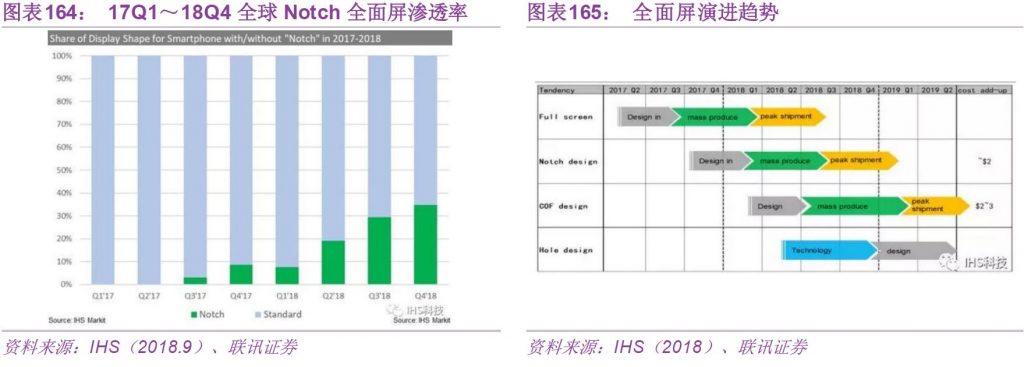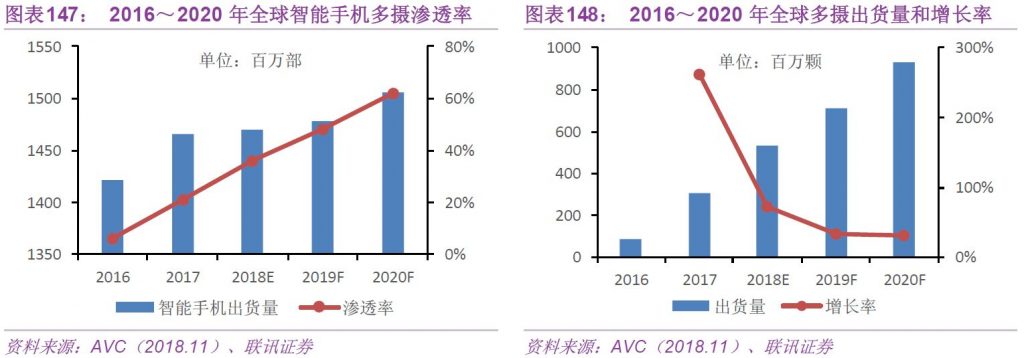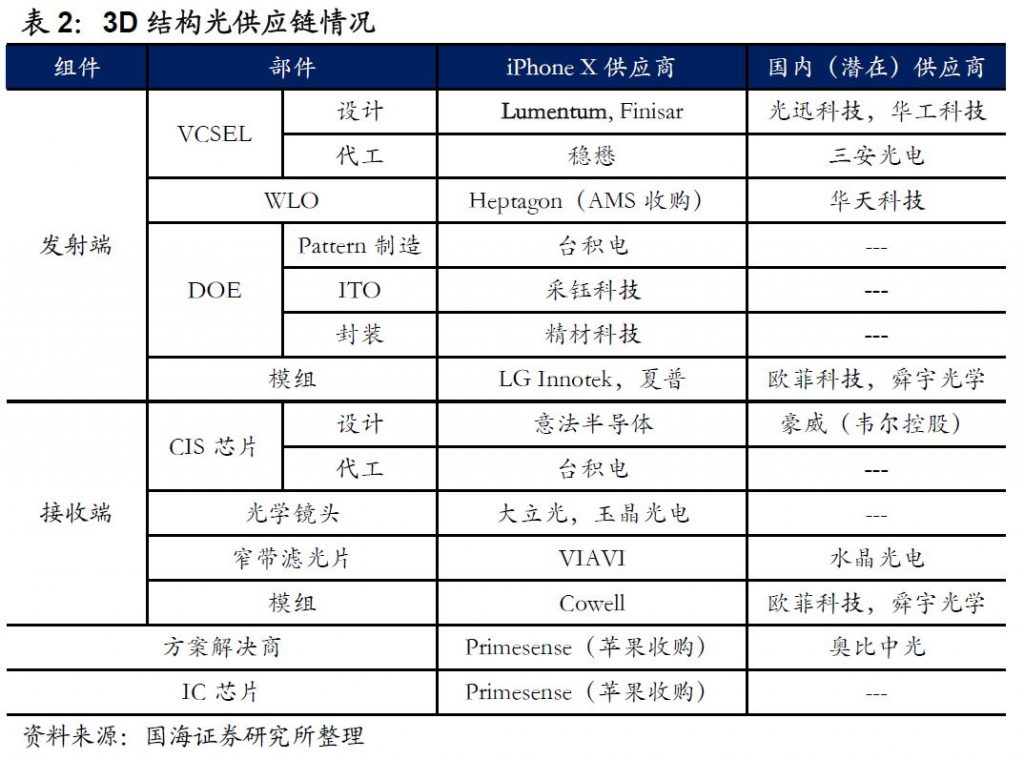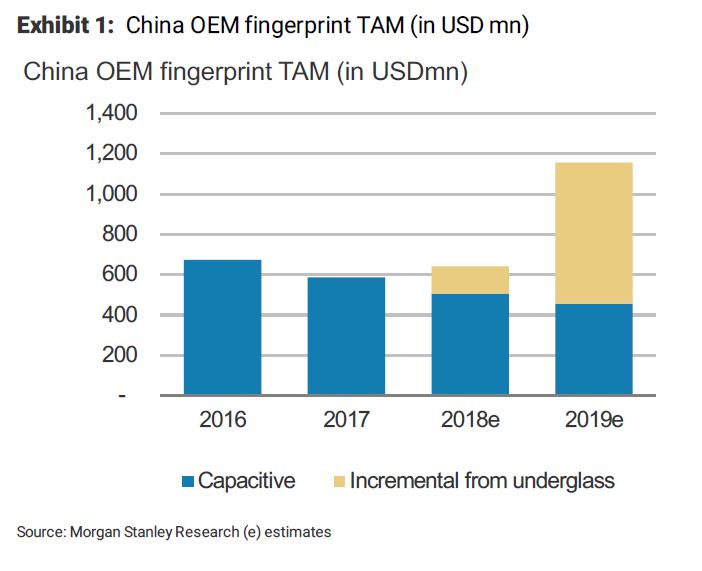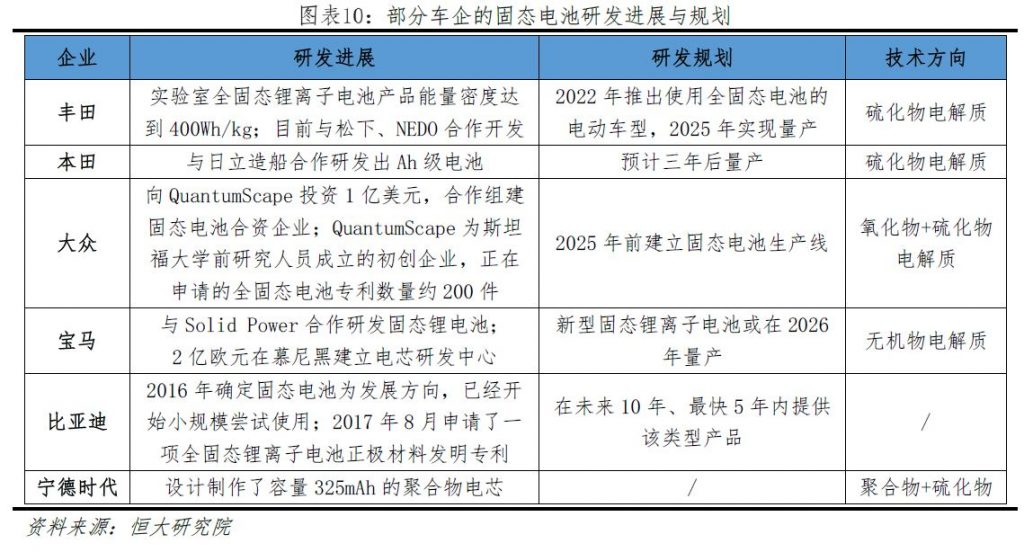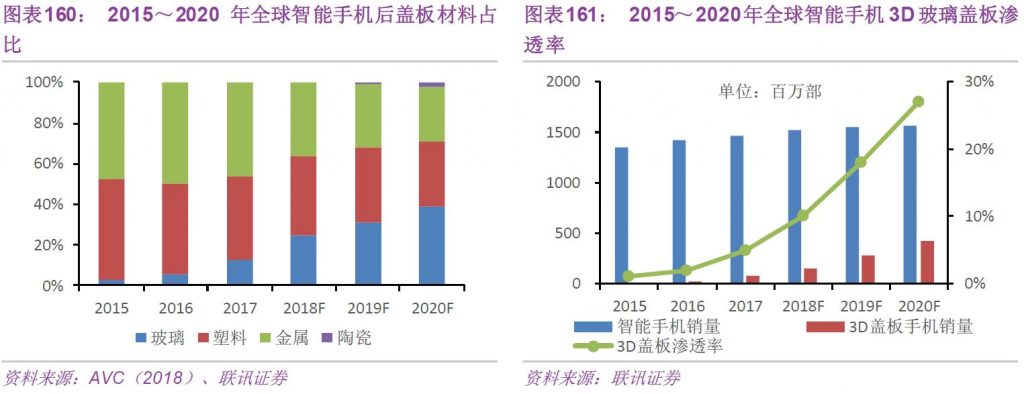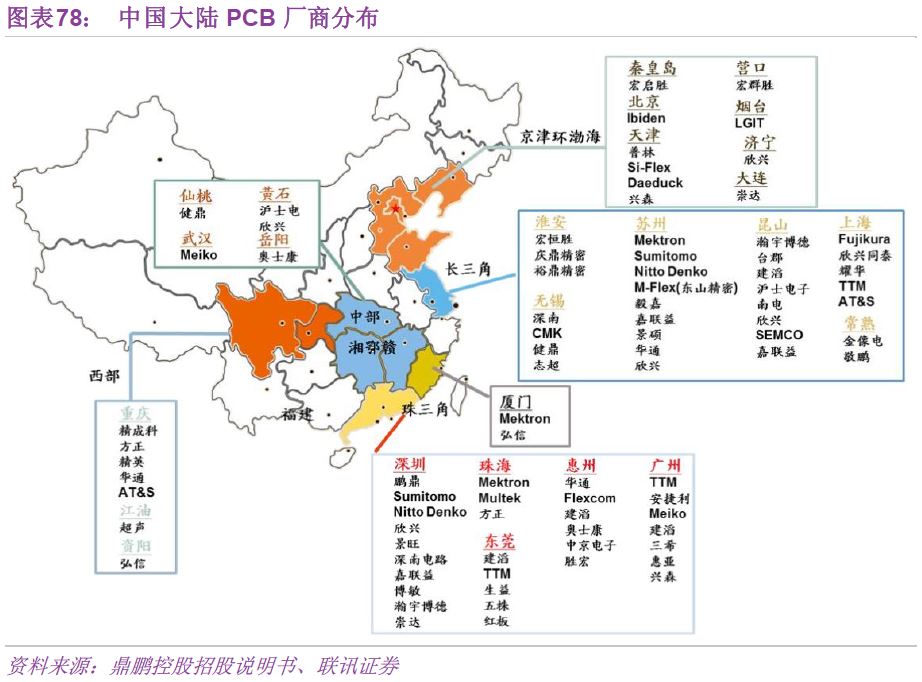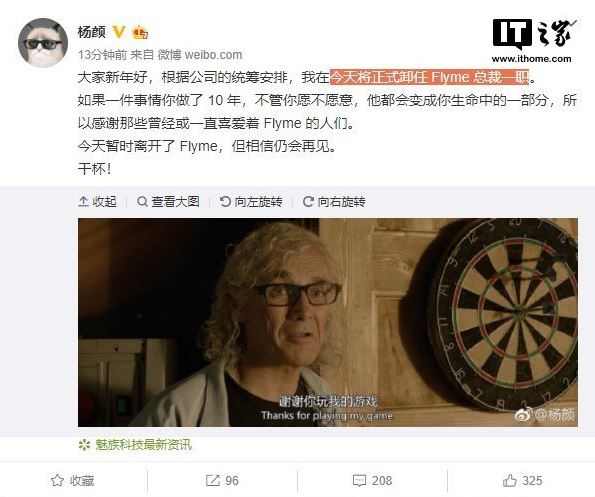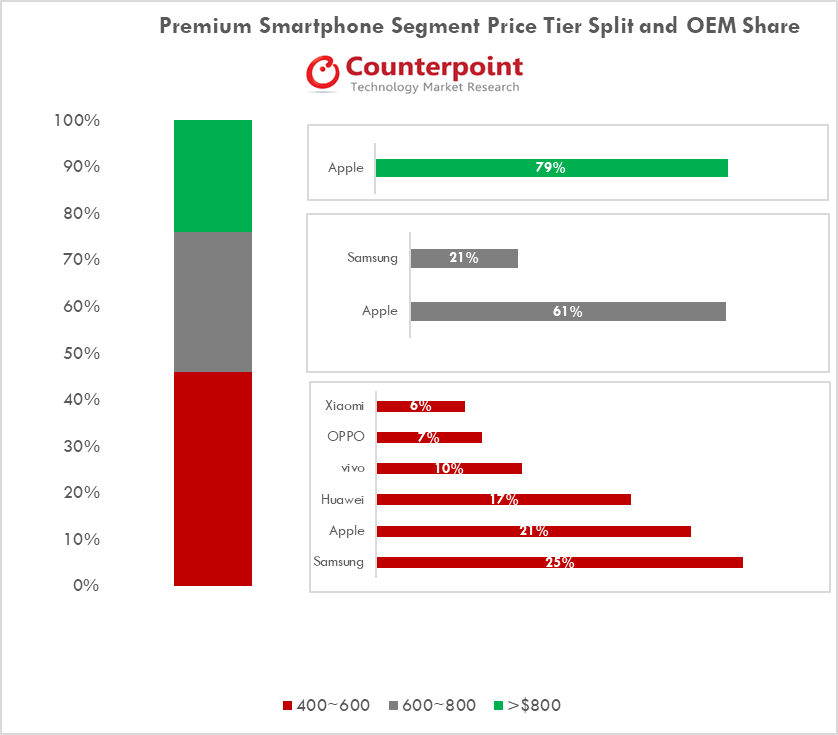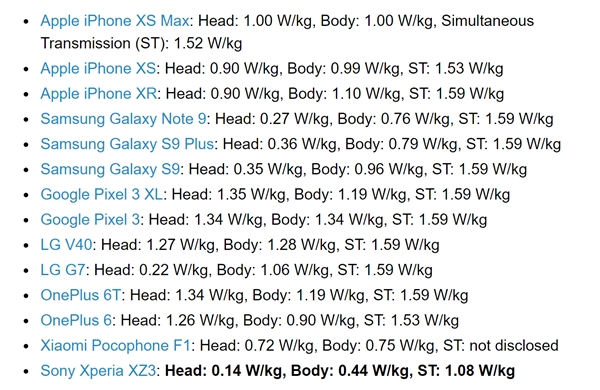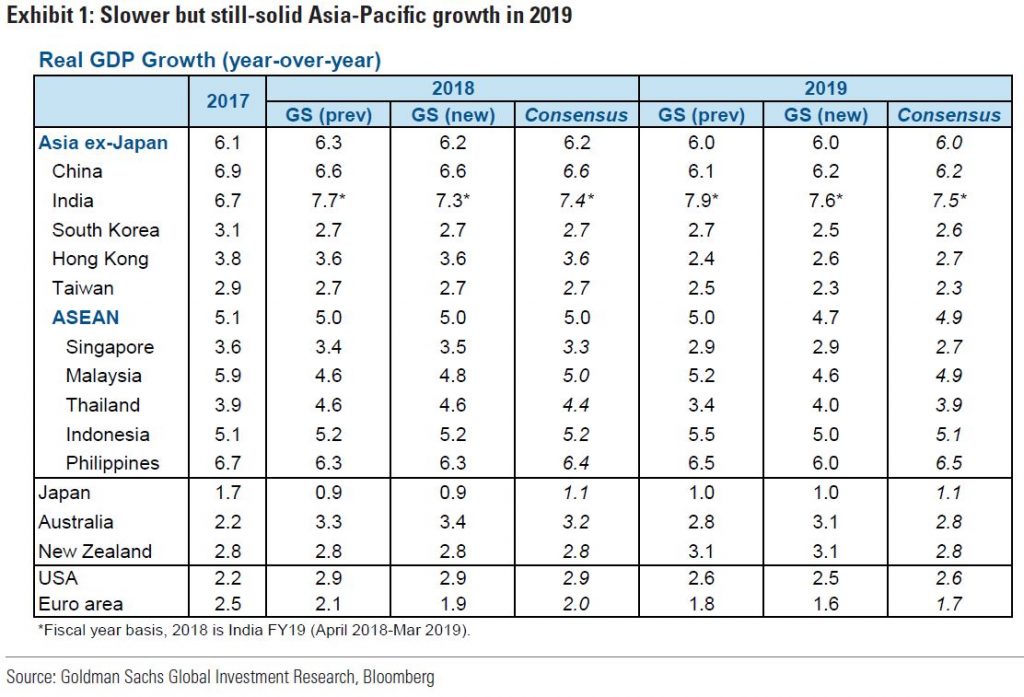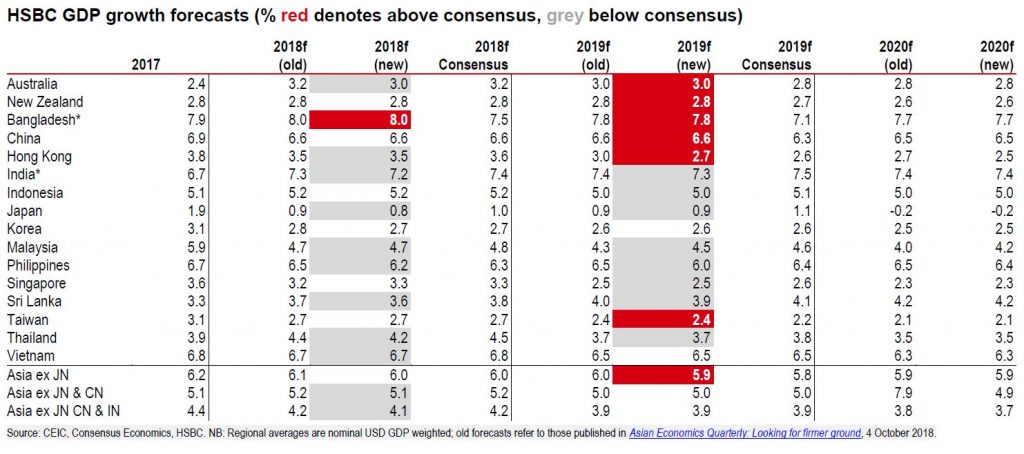
01-01 Happy 2019: A series of numbers consolidated from a number of reports including Goldman Sachs, Morgan Stanley, etc.
Chipsets
Cisco plans to buy semiconductor company Luxtera for USD660M in cash and assumed equity. It said Luxtera’s advanced chips will help Cisco meet business client demand for faster and high-performing network service. Luxtera, which is founded in 2001 and raised more than USD130M, will give Cisco a photonic solution for that data networking problem. (My Drivers, East Money, TechCrunch, CNBC, Sina)
Touch Display
The so-called “drill hole” front-facing camera technology is to open a very small hole in the upper left or upper right of the front screen of the mobile phone, and then place the front camera under the glass cover of the display screen, the LCD panel and the backlight layer. In addition to this opening a small hole for the camera, the mobile phone appears to be full-display, because the manufacturer will also make the earpiece “hidden”. In 2019, this kind of trend will be very popular in the Android mobile phones, and each manufacturer will prepare sufficient reasons to promote the next round of full-display smartphone redesign revolution. (CN Beta, Feng)
IHS Markit estimates that in 4Q18 “notch” display shipment would reach 163M units, with 35% penetration rate. Smartphone vendors will continue to push panel makers to advance in their display making technologies, seeking breakthroughs, such as drilling hole for the front camera and 3D structured light camera modules. (Lianxun Securities report)
Camera
In 2019, tri-cam might become smartphone rear camera important solution. The growth of smartphone market is slowing down, smartphone camera shipment is actually increasing. AVC expects that in 2018 multiple-camera equipped smartphone adoption rate would reach 36%, with 529M units shipped, a 72% increase on year. In 2019 and 2020, the adoption rate would be 48% and 62%, shipment would be 709M and 933M units, and yearly growth of 34% and 32%, respectively. (Lianxun Securities report)
Sensory
According Sealand Securities, Android vendors are aggressively working around Apple’s lock on the 3D structured light patents, looking for 3D facial recognition solutions. 3D sensors have a market potential, because in addition 3D facial recognition, AR application requires 3D sensors. (Sealand Securities report)
Biometrics
Morgan Stanley believes the adoption rate of optical underglass fingerprint in Android will increase to 10%~15% in 2019 (vs. their prior expectation of 6%~7%) from 3% in 2018, or shipments of around 150M units in 2019. Given the much higher ASP (>4x that of capacitive fingerprint sensor), they believe the total addressable market (TAM) for fingerprint IC could nearly double in 2019. (Morgan Stanley report)
Battery
Volkswagen envisions a future in which cities are peppered with power bank-like mobile charging stations that keep electric cars topped up quickly and conveniently. The charging capacity of up to 360kWh enables up to 15 e-vehicles to be charged in stand-alone operation. Thanks to quick charging technology, the charging process2 only takes 17 minutes on average. (Digital Trends, Volkswagen, IT Home)
Overall automotive solid-state battery segment could be categorized into internal research and external investment. The former is represented by Toyota, whilst the latter is represented by BMW and Volkswagen. The overall industry is moving forward fast in 2017. Toyota has a deep experience and knowledge in battery technologies. From Prius NiMH battery to Mirai fuel cells, Toyota is the first company to apply new technology to its vehicles. (Evergrande Research report)
Connectivity
Beidou, China’s home-developed satellite navigation system, has launched its global service ahead of schedule as the country looks to challenge the dominance of America’s Global Positioning System (GPS). China has already shipped more than 70M Beidou systems, which include microchips and modules, domestically and to over 90 countries, and the system is being well-received in Russia, Pakistan, Thailand, Indonesia and Kuwait. (My Drivers, EE World, STCN, DRAMx, SCMP, TechNode)
Material
According to AVC, in 2017 smartphone back cover mainly uses metal (mid-to-high end) and plastic (low-end), with 87% market share. In 2017, smartphone with 3D glass back cover shipment reaches 74M units. In 2018, Huawei, OPPO, vivo, nubia, OnePlus and other vendors have begun adopting 3D glass for their high-end flagships, it expects the shipment will reach 150M units. Corning, Lens Technology, and Biel Crystal are the leaders for 3D glass. (Lianxun Securities report)
Currently there are about 2000 PCB vendors globally. According to Prismark, the global top 5 PCB vendors market share has grown from 11% in 2006 to 23% in 2017. Currently in China there are about 1500 PCB vendors, mainly located at Pearl River Delta, Yangtze River Delta and Bohai Sea. (Lianxun Securities report)
Prismark expects multi-layer PCB will play a vital part in the market, providing supports to the industry development. It forecasts 2017~2022 CAGR in China for 8-16 layer and 18 layers above are 4.8% and 6.2%, respectively. (Lianxun Securities report)
Phone
Senior vice president of Meizu and president of the Flyme Division Yang Yan, announced his resignation. Subsequently, Huang Zhang, Meizu CEO, said that Yang Yan had been biased with the operation of the company for a few years ago. (GizChina, CN Beta)
According to Counterpoint Research, The global, premium smartphone segment grew faster (+19%) than the overall smartphone segment (-5%) in 3Q18. Growth was driven by Apple’s new iPhones and flagship launches of Chinese players like OPPO and vivo. The premium smartphone segment represented 22% of the global smartphone market share during 3Q18. Close to 40 OEMs compete in the premium segment globally, out of which the top five players account for almost 89% of shipments. (Counterpoint, press, GizChina, CN Beta)
SAR stands for specific absorption rate and while it is a ridiculously old and outdated standard (the testing method was conceived in 1996 when there were no smartphones and it has not changed since), it does provide at least some measurement. Phones with higher SAR rating are considered potentially more dangerous, and all phones pass testing to ensure they are below a certain threshold. (My Drivers, Phone Arena)
Realme is planning to expand offline sales in India to 150 cities in 2019. The company has announced that it aims to cover 150 cities in a phased manner in 2019, starting with 10 cities in January. The company will also set up 20,000 outlets across the country where it plans to sell all Realme phones that the brand has launched. (Gizmo China, Money Control, India Today)
Augmented / Virtual Reality
Transportation startup FlixBus already offers passengers free Wi-Fi and power outlets at every seat. It has recently announced a 3-month pilot program on some of its longer and straighter routes that will provide some seats with a VR headset, specifically Phoenix to Las Vegas and Los Angeles to Vegas. (CN Beta, TechSpot, TechCrunch)
Economy
Over the past year, most Asian economies grew at or above the “trend” pace that Goldman Sachs views to be sustainable in the longer term. Tighter financial conditions in recent months are likely to be a catalyst for moderately slower growth in 2019. Their 2019 growth forecasts now imply trend or slightly below-trend growth in most economies. (Goldman Sachs report)
Trade tensions escalated in 2018, the Fed hit the brakes, China tightened funding, and oil, for a while at least, surged. All considered, growth across Asia is decent enough. Entering the Year of the Pig, things may look a little less daunting: China and the US are back talking, with tariff hikes for now suspended, the Fed is moving towards a pause, China is easing at the margin, and oil has plunged. The global cycle is still cooling, providing headwinds for exporters. However, tighter financial conditions will drag down local demand with a lag. (HSBC Global Research report)

